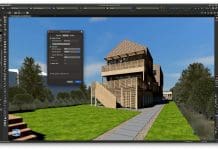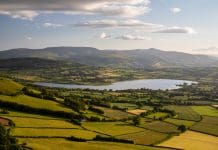Jon de Souza, Business Improvement Manager, Galliford Try and Chair, BIM4Water details the challenges of incorporating BIM in the water sector and how BIM4Water are addressing the issues
Over the last few years there has been an increasing push for Building Information Modelling across the built environment sector. This momentum has been driven by a selection of government and industry reports, culminating in the introduction of the mandate to achieve Level 2 BIM for all central government construction projects from 2016.
This introduction of BIM for central government is part of a strategy to achieve improved outputs and outcomes from construction procurement. Indeed, July 2013’s ‘Construction 2025’ document set targets including:
- 33% reduction in both capital and whole life costs;
- 50% reduction in the time taken to deliver or refurbish assets from inception to completion;
- 50% reduction in carbon emissions from the government estate.
Evidence from other sectors has demonstrated that the use of BIM can support, amongst other things, better time and cost predictability in capital delivery through visualisation and clash detection, better exploitation of opportunities for off-site manufacture and standardisation, improved resource efficiency in construction and operation, facilitation for collaborative working and, crucially, better asset data to enable optimum decision making.
The UK water companies are faced with challenging efficiency targets throughout AMP6 (Asset Management Programme 6) and as such, are seeking ways to drive performance improvement through both their capital delivery and asset management processes.
Therefore, interest in BIM in the water sector is gradually increasing. As Chair of BIM4Water, I am delighted that we have involvement from all of the UK’s Water and Sewerage companies and a number of the water only clients.
However, despite the interest shown, the government mandate does not apply to the water sector, and as such, there has not been a burning platform to force the water companies to adopt the BIM process. Therefore, although there is some recognition that BIM has supported improvement in other sectors, there are still a number of barriers to BIM adoption in water.
At present, the level of knowledge regarding BIM across the water sector is very mixed. There is still a perception that BIM is only for buildings, and some of those I speak to consider BIM to be a technology solution rather than a process, with a small number of people thinking it’s possible to “buy a BIM”.
There is still uncertainty around some aspects of BIM. A number of water companies have invested heavily in their asset management systems in the last few years. At present there is still work to do to ensure that the digital data from a BIM process can be seamlessly incorporated into these systems.
There is also a recognition across the sector that BIM adoption across the sector needs to be coordinated. There is a real risk that there could be significant inefficiency if different organisations, be they clients, contractors, consultants or companies in the supply chain, adopt different BIM standards.
Finally, at present there is insufficient evidence of the value from BIM use in the water sector to make a compelling business case for many senior decision makers. It is recognised that a better evidence base is required.
BIM4Water is a cross-industry group open to all organisations involved in the management and delivery of water and wastewater assets, operating as a partner to the UK Government BIM Task Group. The group’s make up is reflective of the sector, involving clients, contractors, consultants, suppliers, sub-contractors and other bodies. Our mission is to support organisations in the water sector with the adoption of Building Information Modelling. At present we have over 100 organisational members. In order to address a number of the barriers mentioned above we have formed four task groups:
- Case studies and evidence;
- Influence senior leaders in client organisations including producing a business case;
- Creating and signposting guidance and communications;
- Standard libraries.
We have recently launched a Demonstration Programme where we track live projects utilising BIM. Through this approach we hope to generate sufficient evidence to demonstrate the value of BIM. We would encourage any organisations in the water sector with BIM projects to contact us to support the development of the sector.
We recognise that BIM is a significant enabler of collaborative working. This collaborative approach is at the centre of our ethos – we recognise that in moving together as a sector we can generate significant value for all.
Building Information Modelling (BIM) is a digital representation of the physical and functional characteristics of an asset; creating a shared knowledge resource for information about it and forming a reliable basis for decisions during its life cycle, from earliest conception through design, construction and operation to demolition.
Jon de Souza
Business Improvement Manager, Galliford Try and Chair, BIM4Water
Tel: 01895 855 000
jon.desouza@gallifordtry.co.uk
www.bimtaskgroup.org/bim4water
Twitter: @JonBIM4Water













